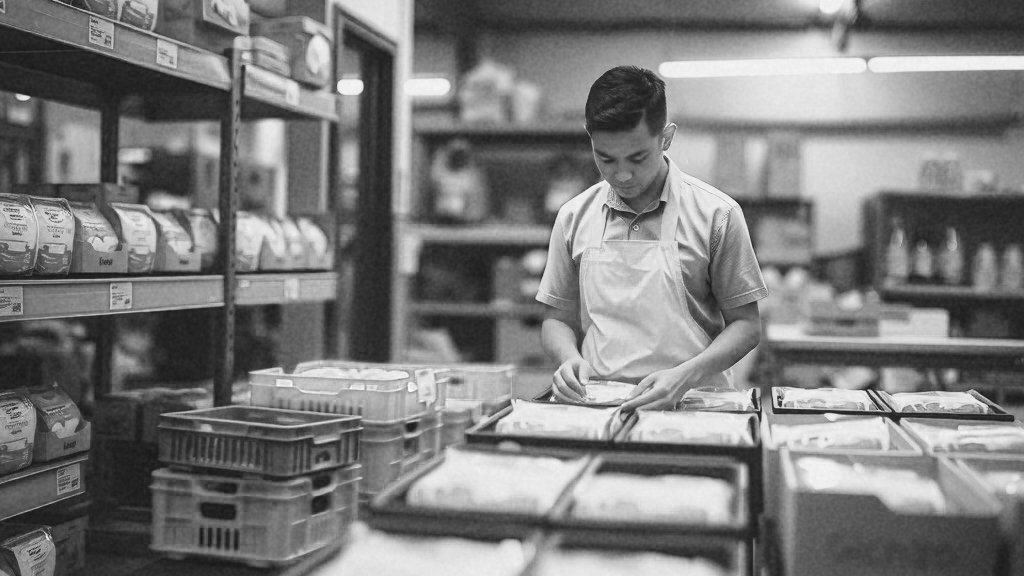Mastering Forecasting for 2025: Strategies to Simplify Complexity for Food & Beverage CPG Brands

For food and beverage consumer packaged goods (CPG) brands, forecasting is no longer just about crunching numbers—it’s about staying adaptable in a fast-paced, data-driven market. The challenges of disconnected systems, overwhelming metrics, and unpredictable market shifts make financial forecasting more complex than ever. However, brands that simplify their approach and adopt integrated strategies can reduce complexity, avoid costly mistakes, and position themselves for sustainable growth.
This guide dives into actionable strategies that food and beverage CPG brands can use to streamline forecasting, plan for uncertainties, and thrive in 2025.
The Challenges of Forecasting in 2025
Food and beverage CPG brands face unique hurdles when forecasting in today’s market:
1. Fragmented Data Systems
- Many brands still rely on separate platforms for eCommerce, retail, inventory, and marketing. These silos create inefficiencies and hinder decision-making.
2. Shifting Consumer Behavior
- From plant-based snacks to ready-to-eat meals, consumer preferences are evolving rapidly, making demand forecasting a moving target.
3. Unpredictable Market Trends
- External factors like inflation, ingredient shortages, or climate events can disrupt even the best-laid plans.
4. Overwhelming Metrics
- Brands often struggle with deciding which metrics to prioritize, leading to dashboards cluttered with irrelevant data.
5. Operational Complexity
- Managing a mix of direct-to-consumer (DTC), wholesale, and retail channels requires balancing conflicting priorities and resources.
Strategies to Reduce Complexity and Avoid Forecasting Pitfalls
To overcome these challenges, food and beverage CPG brands can implement the following strategies:
1. Integrate Systems Early
Disconnected data systems are one of the largest barriers to accurate forecasting. Brands need to centralize their data to achieve clarity and reduce inefficiencies.
- How to Do It:
Use platforms like NetSuite, QuickBooks, or Microsoft Dynamics to integrate eCommerce, enterprise resource planning (ERP), and inventory management systems.
- Example in Practice:
A growing beverage brand syncing its Shopify eCommerce data with its inventory system to predict production needs more accurately.
- Pro Tip:
Ensure your advertising platforms (like Google Ads and Meta Ads) and email marketing tools are also connected. This integration provides real-time insights into ROI and marketing efficiency.
2. Simplify Metrics
Dashboards overflowing with metrics lead to analysis paralysis. Instead, focus on a few high-impact key performance indicators (KPIs) that drive actionable insights.
- Key Metrics to Track:
- Gross Margin: Understand profitability at a product level.
- Customer Acquisition Cost (CAC): Ensure your marketing spend aligns with long-term profitability.
- Customer Lifetime Value (LTV): Identify which customers are the most valuable over time.
- Churn Rate: Monitor how well you’re retaining customers.
- Avoid These Pitfalls:
- Tracking vanity metrics like social media followers or website visits without understanding their impact on revenue.
3. Refine Demand Forecasting with AI
AI-driven analytics allow brands to make more accurate predictions by incorporating historical data and external variables like seasonality or economic trends.
- Why It Matters:
- Traditional forecasting tools often miss nuanced changes in consumer behavior or sudden market shifts.
- AI tools can adjust forecasts dynamically based on real-time data.
- How to Use It:
- Leverage AI platforms to predict demand spikes for seasonal products like holiday beverages or summer snacks.
- Use predictive analytics to adjust production schedules based on weather forecasts or holiday calendars.
- Pro Tip:
Build scenarios that account for potential supply chain delays or ingredient shortages.
4. Centralize Decision-Making
In many organizations, forecasting decisions are fragmented across departments, leading to inconsistencies and errors.
- How to Fix It:
- Appoint a forecasting lead to oversee financial planning across marketing, operations, and inventory teams.
- Standardize processes so all teams work from the same data sources and assumptions.
- Example in Practice:
A snack company appoints a cross-department lead to align seasonal marketing campaigns with inventory forecasts, avoiding costly stockouts during promotions.
5. Plan for Contingencies
Market disruptions are inevitable, whether caused by inflation, supply chain delays, or unforeseen events. Contingency planning is crucial for mitigating risks.
- How to Do It:
- Develop three scenarios for each forecast: optimistic, realistic, and pessimistic.
- Build flexibility into budgets to allow for unexpected expenses.
- Example in Practice:
A premium chocolate brand models the impact of a potential 20% increase in cacao prices and adjusts its pricing and inventory strategies accordingly.
Additional Best Practices for Food & Beverage CPG Forecasting
1. Leverage Real-Time Data
Real-time dashboards enable brands to monitor performance continuously and make adjustments on the fly.
2. Train Your Team
Forecasting tools are only as effective as the people using them. Invest in training to ensure your team understands how to use systems effectively.
3. Balance Automation with Expertise
While automated systems handle data processing, human oversight is critical to interpret nuanced market changes.
4. Collaborate Across Teams
Foster collaboration between marketing, operations, and finance teams to ensure alignment on forecasting goals.
5. Review and Revise Regularly
Forecasts should not be static. Review them regularly to ensure they reflect current market conditions and operational realities.
Forecasting for food and beverage CPG brands in 2025 is about more than just predicting numbers—it’s about building resilience, optimizing efficiency, and staying ahead of market shifts. By integrating systems, focusing on actionable metrics, and leveraging AI-driven insights, brands can streamline complexity and navigate the future with confidence. With proactive strategies and a commitment to continuous improvement, forecasting becomes a powerful tool for growth and success.
I am an Ad-Age, Emmy, Shorty, Telly, and Webby Award-Winning Social Media Strategist and Content Creator for outdoor lifestyle, adventure, travel, and recreation brands. With over 20 years of innovation in social media strategy and content creation, I’ve been pivotal in enhancing the digital footprint of numerous outdoor lifestyle, travel, adventure, food & beverage brands. My expertise lies in crafting compelling narratives that engage and inspire audiences, driving community engagement and brand loyalty.
adage, emmy, telly & webby award-winning digital marketing consultant for purpose-driven food & beverage brands.





